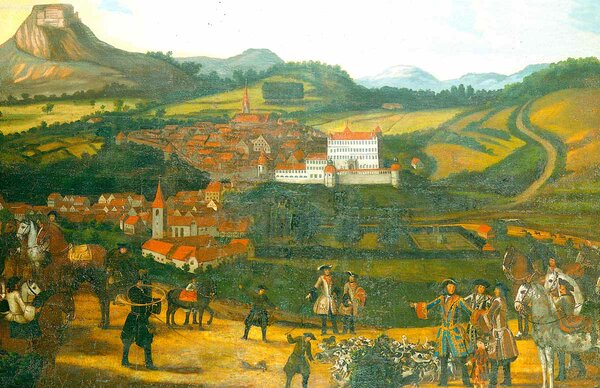The State Museum of Hohenzollern documents the history and the history of the art of the former Hohenzollern lands. The rich portfolios go back to the Hohenzollern State Collection, which came into being in 1896. Amongst other things, the exhibition includes a rich bronze age double grave from around 1000 BC, which was discovered in Gammertingen in 1927. There is church art in the form of numerous statues and paintings, e.g. the "Laizer Apostle" (around 1330) and the famous stations of the cross by sculptor Joachim Taubenschmidt (16th century).
The Hohenzollern Wedding (1598), one of the most glamorous social events of the Renaissance in south-west Germany, is presented audio-visually.
Special exhibitions and presentations on Hohenzollern history regularly complement the museum’s programme.

